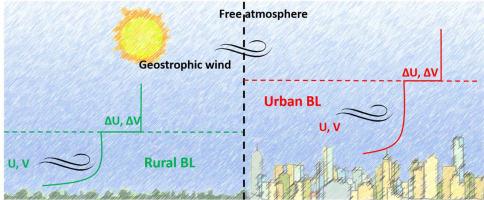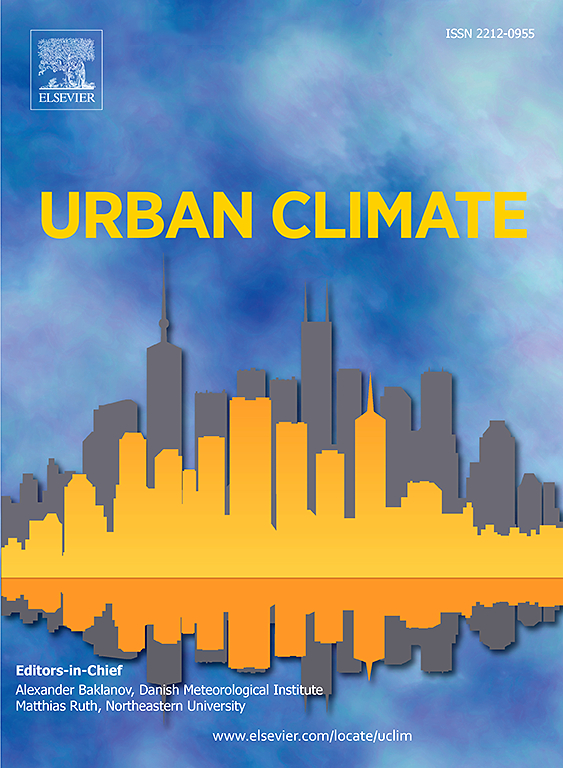The urban wind island from a three-dimensional perspective
IF 6
2区 工程技术
Q1 ENVIRONMENTAL SCIENCES
引用次数: 0
Abstract
The Urban Wind Island (UWI), a small but persistent positive mean boundary-layer wind anomaly over the city as a whole, has previously been revealed using a simplified conceptual model of the convective atmospheric boundary layer. This study extends the UWI research into less idealised cases by using the three-dimensional WRF mesoscale model for Amsterdam (The Netherlands) and its surroundings, at 500 m grid spacing. Two summers of forecast results for in total 173 days are used to identify whether the UWI persists in a three-dimensional modelling environment, and which conditions are optimal for its formation and persistence. In order to focus only on wind modified by surface processes, large-scale influences which modify wind speed, such as frontal passages, are identified and eliminated from the dataset. We then find that a positive UWI is present roughly half the time, with an order of magnitude that is similar to the previous work ( 0.2–0.5 ). In addition we find an evening UWI that is caused by the delayed onset of the transition from an unstable to a stable or a neutral boundary layer in the urban area, while the rural area is already stable and calm.

从三维角度看城市风岛
城市风岛(UWI)是指在整个城市上空出现的小而持续的正平均边界层风异常现象,以前曾利用简化的对流大气边界层概念模型揭示过这一现象。本研究通过使用三维 WRF 中尺度模型对阿姆斯特丹(荷兰)及其周边地区进行了研究,网格间距为 500 米,从而将 UWI 研究扩展到不太理想的情况。利用两个夏季共计 173 天的预报结果,来确定在三维建模环境中是否会持续出现 UWI,以及哪些条件是形成和持续出现 UWI 的最佳条件。为了只关注受地表过程影响的风,我们从数据集中识别并剔除了改变风速的大尺度影响因素,如锋面过境。然后,我们发现正的 UWI 在大约一半的时间内存在,其数量级与之前的研究相似(∼ 0.2-0.5 ms-1)。此外,我们还发现了晚间的 UWI,这是由于城市地区的边界层从不稳定性向稳定或中性过渡的起始时间推迟,而农村地区已经稳定平静。
本文章由计算机程序翻译,如有差异,请以英文原文为准。
求助全文
约1分钟内获得全文
求助全文
来源期刊

Urban Climate
Social Sciences-Urban Studies
CiteScore
9.70
自引率
9.40%
发文量
286
期刊介绍:
Urban Climate serves the scientific and decision making communities with the publication of research on theory, science and applications relevant to understanding urban climatic conditions and change in relation to their geography and to demographic, socioeconomic, institutional, technological and environmental dynamics and global change. Targeted towards both disciplinary and interdisciplinary audiences, this journal publishes original research papers, comprehensive review articles, book reviews, and short communications on topics including, but not limited to, the following:
Urban meteorology and climate[...]
Urban environmental pollution[...]
Adaptation to global change[...]
Urban economic and social issues[...]
Research Approaches[...]
 求助内容:
求助内容: 应助结果提醒方式:
应助结果提醒方式:


